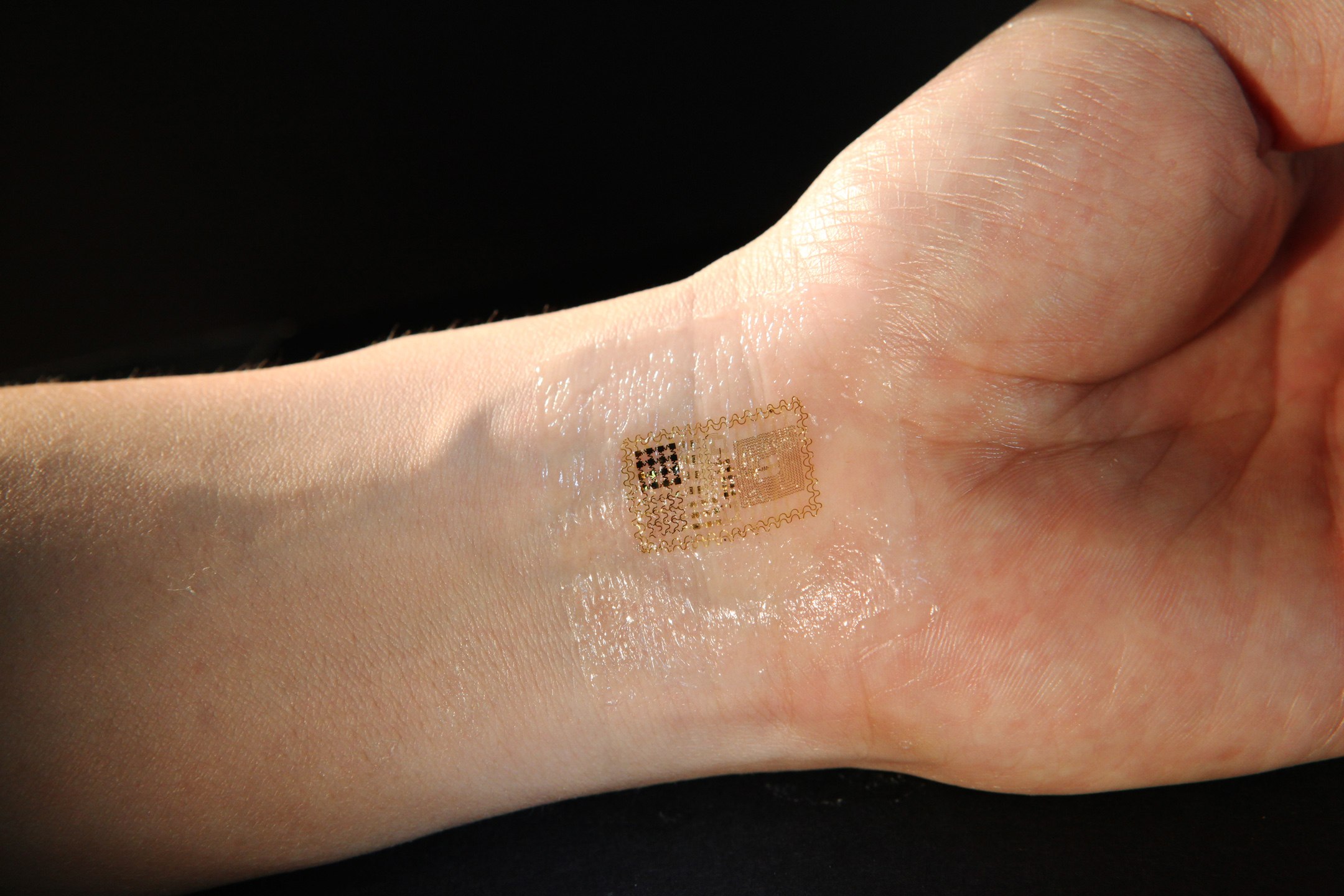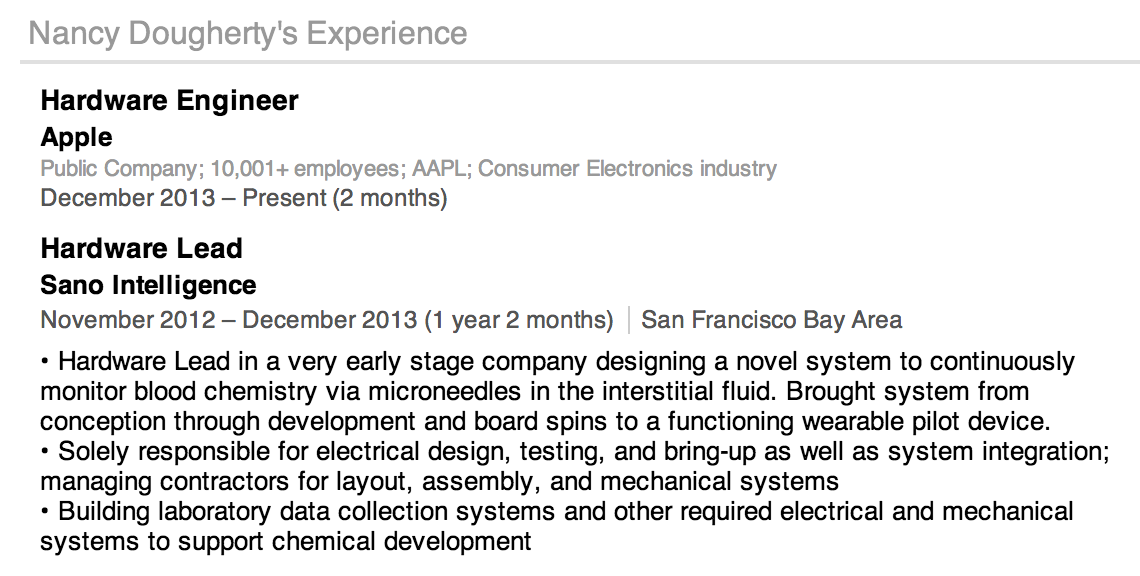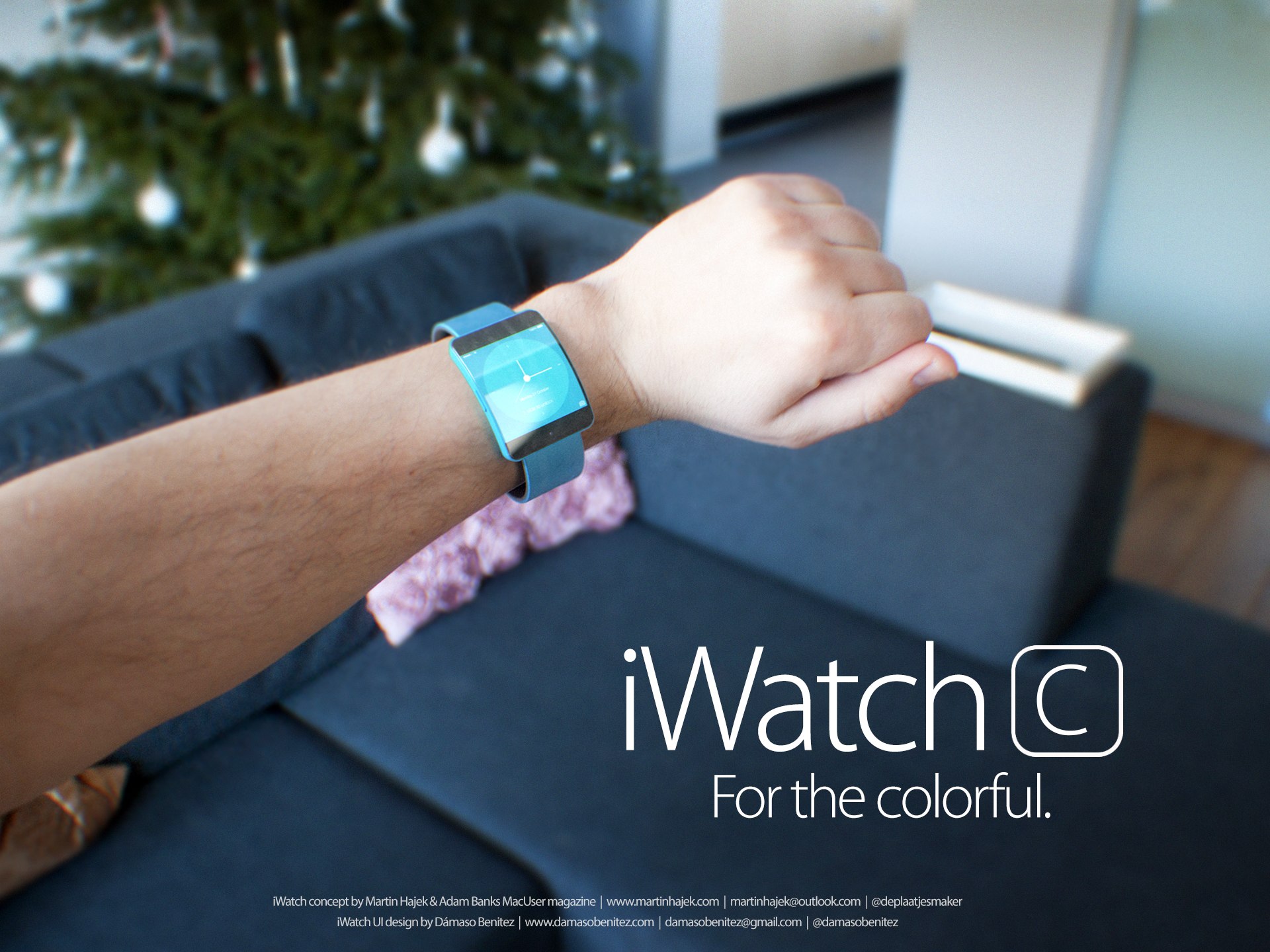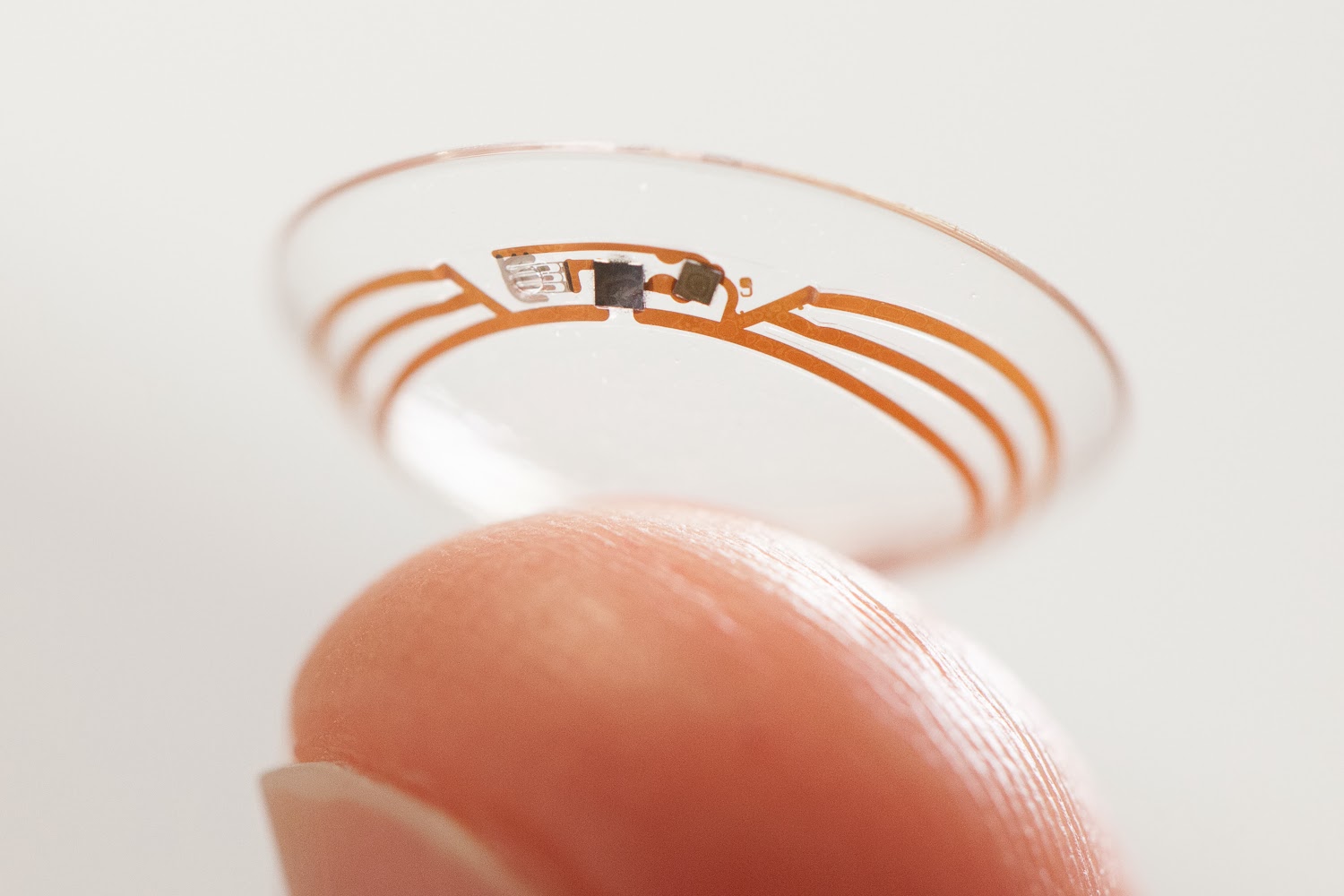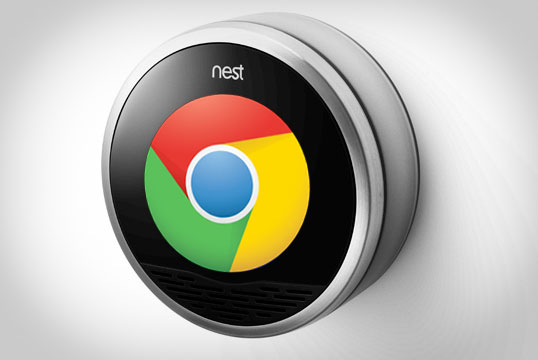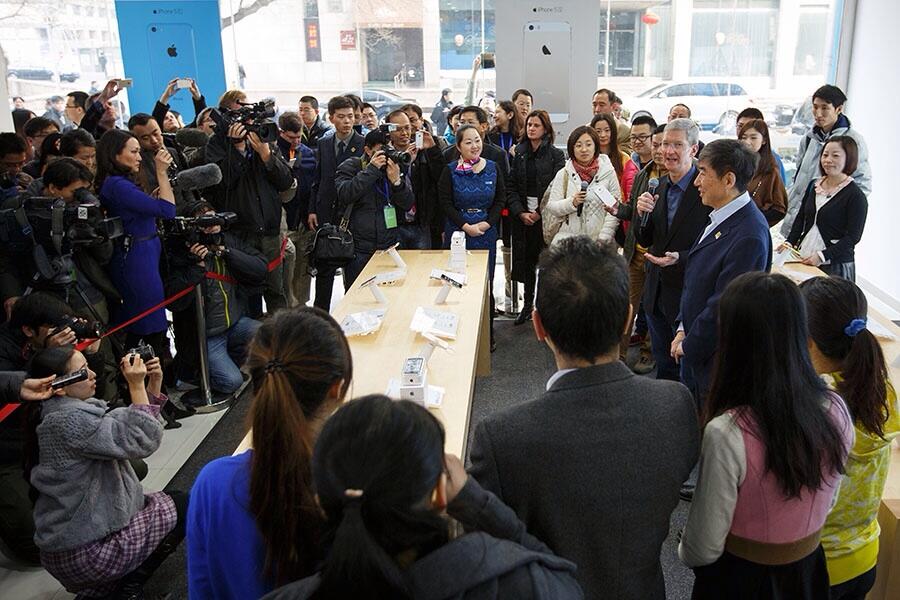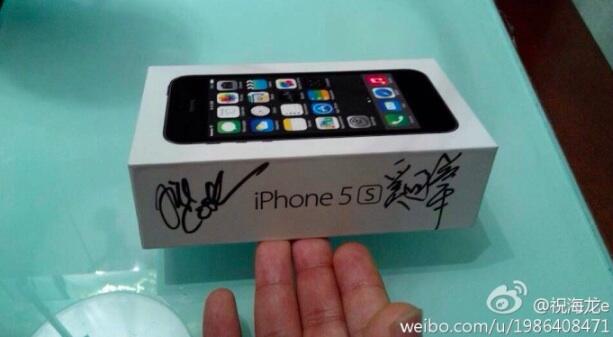If a new report by a very reliable blogger is anything to go by, Apple’s rumored wearable project is seeking to mainstream medical sensor technology and health biosensing via monitoring your blood chemistry. Evidence proves that earlier this year the company poached two high-profile biosensor experts from medical devices firms.
These people, who joined the iWatch hardware team, bring expertise in mobile medical technologies focused on reading and analyzing blood and glucose levels via a potentially disruptive technology that uses a painless patch which works on the arm and doesn’t require a needle.
Apple’s interest in blood monitoring through skin is interesting in light of the rumored iWatch wearable device, even more so considering Google’s latest initiative – Smart Contact Lenses that measure glucose levels in tears.
Furthermore, the iPhone maker is said to be “actively investigating” iris scanning technology. As we wrote before, Samsung is said to be exploring iris scanning for the upcoming Galaxy S5. This is your TL;DR version, the full analysis and detailed context continues…
Mark Gurman of 9to5Mac has a nice scoop on Apple’s recent hiring of Sano Intelligence hardware developer Nancy Dougherty and Vital Connect’s Ravi Narasimhan. Both are biometric sensor experts with electrical engineering degrees from Stanford.
Nancy Dougherty (pictured above), who worked for the Sano Intelligence, is a bit of a mystery as the startup hasn’t launched a product yet. According to profiles by both The New York Times and Fast Company, she was the hardware developer of a tiny arm patch that uses needle-less technologies to read and analyze blood chemistry.
Sano’s prototype can measure glucose and potassium levels and will soon be able to monitor “everything you might find on a basic metabolic panel–a blood panel that measures glucose levels, kidney function, and electrolyte balance,” the profiles read.
It’s possible Apple is looking to incorporate this biosensor into the iWatch.
Check out a screenshot of her LinkedIn profile, a richer version from Google cache.
Before joining Sano, she worked at Proteus Digital Health on a Bluetooth device which monitors heart rate, respiration, motion and temperature.
As for Ravi Narasimhan, seen below, Apple poached him from general medical devices company called Vital Connect. As their Vice President of Research and Development, he was tasked with “biosensor technology and algorithms for remote physiological monitoring with wearable medical devices”.
According to his public LinkedIn profile, Narasimhan holds over “40 patents granted and over 15 pending,” many of which cover various medical sensors, including patents for measuring the respiratory rate and the body’s position in space to tell if a person has fallen.
We can only speculate whether or not Narasimhan’s and Dougherty’s work for their respective former employers is directly related to the iWatch project. What these hirings suggest, in Gurman’s own words, is that Apple is “growing its team of medical sensor specialists by hiring some of the world’s most forward-thinking experts in seamless mobile medical technologies”.
Gurman also learned from sources that Apple is “actively investigating iris scanning technology,” but wouldn’t elaborate further. Gurman’s track record in terms of rumor reporting is excellent, by the way.
As for the rumored iWatch, you can count on one thing: Apple will not introduce it until it is ready. I think we’re way past the rumor stage as Tim Cook & Co. have been poaching some of the world’s top biometric and wearable experts left and right over the past 24 months.
iWatch C concept via Martin Hajek.
Not only these engineers don’t come cheap, their fields of expertise have absolutely nothing to do with Apple’s core businesses – computers, phones and tablets – so clearly there’s enough smoke to make us think there’s a fire.
Some watchers like Jason O’Grady criticize Apple of losing steam in the innovation department to Google’s recent strides.
Cupertino needs to reassure its developers and customers that it’s still relevant in 2014, or they’ll simply jump back in their self-driving cars, read news updates on heads up displays, and start dinner, laundry and feeding their pets remotely as they commute back to their climate controlled homes.
Yeah, O’Grady is a harsh critic.
The Internet giant, among other things, developed autonomous vehicles and bandwidth by hot air balloons. But more importantly, Google is after so-called moonshot projects – that is, initiatives which have the potential to disrupt whole industries much in the same way the iPhone turned the wireless and phone industries upside down.
Yesterday, Google said it is now testing a smart contact lens which contains a tiny wireless chip that measures glucose levels in tears, photographed below. The prototype also includes a miniaturized glucose sensor embedded between the two layers of soft contact lens material.
“We’re testing prototypes that can generate a reading once per second,” the company wrote in a blog post. “We’re also investigating the potential for this to serve as an early warning for the wearer, so we’re exploring integrating tiny LED lights that could light up to indicate that glucose levels have crossed above or below certain thresholds.”
By the way, Google’s smart contact lens sensor is old news for Microsoft, here’s a Microsoft Research video from 2011.
More importantly, Google earlier this week unexpectedly bought a hot Silicon Valley startup Nest which employs over a hundred former Apple engineers and sells smart thermostat and smoke detector devices for the Smart Home of the future.
The brains behind the Nest devices and company co-founder and CEO: the brilliant engineer Tony Fadell, who headed the iPod music player project over seventeen generations and participated in iPhone development.
I postulated why Apple didn’t put up a fight and didn’t even bid.
This has led writer Walter Isaacson, who penned the official bio book on Steve Jobs, to caution that Google is now stealing the innovation crown from Apple. The Internet of Things is actually real, he said, adding that Google’s going to get ahead of that game.
Here’s an excerpt from Isaacon’s TV interview with CNBC:
The greatest innovation today is coming from Google. Fadell was one of the team that created the iPod. He was very deep into the Apple culture when Apple was so innovative. Now Tony Fadell is going to Google because he’s part of the Nest deal.
Isaacson liked Steve Jobs because he “was a disruptor,” but now questions Tim Cook’s ability to lead Apple to its next disruptive thing.
Cook’s got to say ‘What am I going to disrupt? Is it going to be wearables? Is it going to be a watch? Is it going to be TV?’. We ought to see, in 2014, Apple do something huge.
We heard Cook say repeatedly that “big things” are coming in 2014.
During June 2013 earnings call Cook told investors that “we’ve got really great stuff coming across all of 2014”.
The following quarter, the CEO reiterated his belief that Apple has the skills to create “great products” in categories it’s not currently participating in, an indication of new Apple product categories coming in 2014.
Also this in an email to troops last month:
We have a lot to look forward to in 2014, including some big plans that we think customers are going to love.
And earlier today, Cook was present at the opening of a store in Beijing to celebrate the iPhone launch on China Mobile (see the shot above). He even posed for fan photographs and signed some customers’ iPhone boxes.
Of course the media pressed him on future products, to which Cook responded, according to The New York Times:
We never talk about future things. We have great things we are working on but we want to keep them secret. That way you will be so much happier when you see it.
It all makes sense now, doesn’t it?
We’re indeed living in very interesting times, though pessimists might point out that ‘may you live in interesting times’ is actually an ancient Chinese proverb and curse.
Anyways, what do you think Apple’s next big thing should be: a gadget worn on the body, a full-on television set, an iPhablet, a larger-screen iPad or something entirely different?
Pictured top of post: a temporary sensor tattoo which, coupled with the iPhone’s camera, can read the levels of sodium, glucose and even alcohol in your system.
